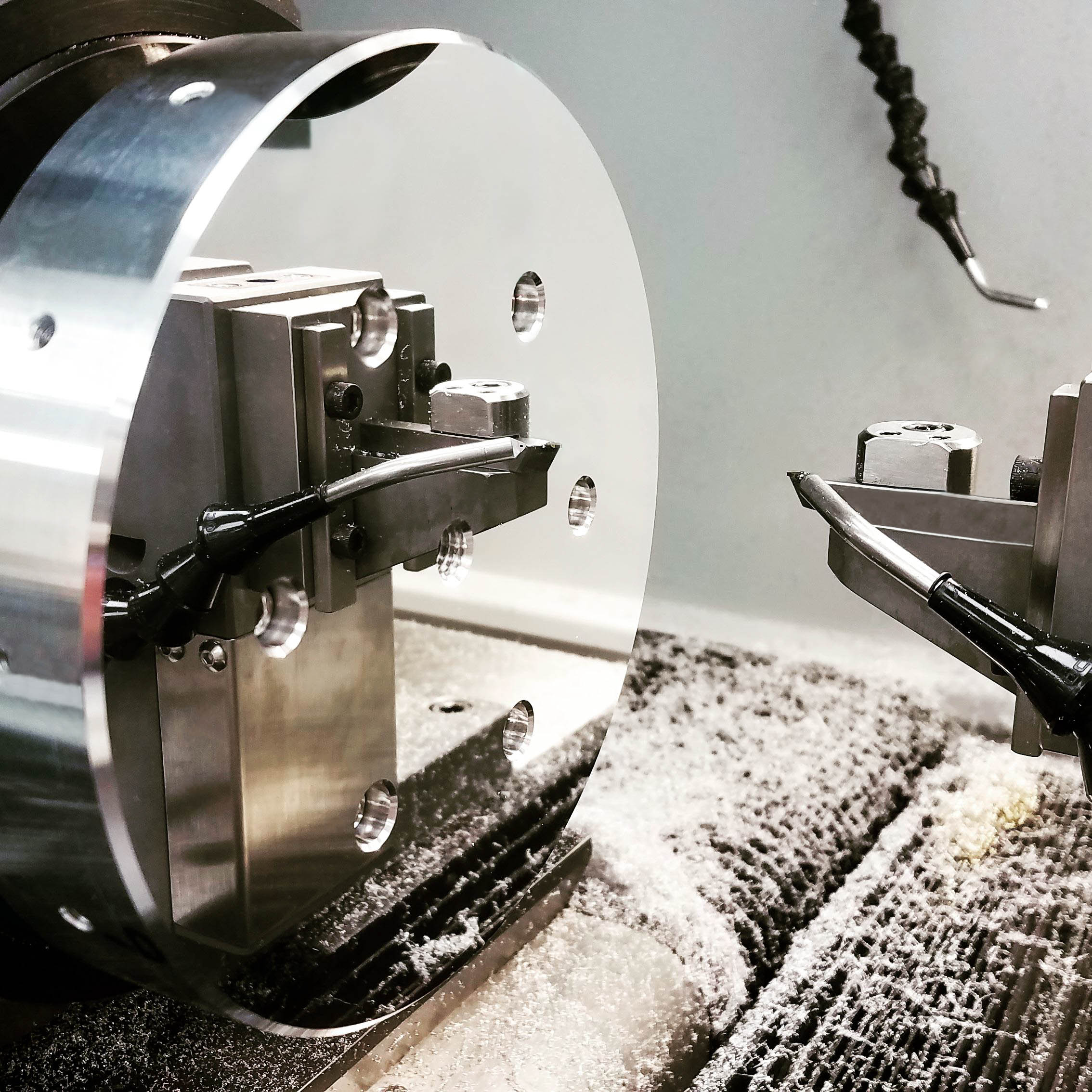
As technology advances, many manufacturers require tools with cutting-edge accuracy. Single point diamond turning (SPDT) is one of today's most precise CNC processes. Equipped with an air-bearing spindle, an SPDT machine can finish parts to an accuracy of less than a millionth of an inch.
This post explores the diamond turning process, the role of air bearings spindles, and factors that affect accuracy.
What Is Diamond Turning?
Diamond turning is a high-precision CNC turning process that uses a diamond-tipped cutting tool with a single point. Often called single point diamond turning (SPDT), it offers the sub-micron level of control required for optics manufacturing.
The most common SPDT machine is the lathe type, where the workpiece rotates, and the cutting tool translates. A flycutter-type machine has the cutting tool rotating while the workpiece translates.
What Factors Influence the Accuracy of the Single Point Diamond Turning Process?
With single-point diamond turning, it’s possible to finish an optical component to within a fraction of a wavelength of light. However, every aspect of the diamond turning process must be geared towards quality to sustain this level of accuracy.
For instance, environmental control is a must because even minor temperature fluctuations can expand or shrink the size of the part (or the SPDT machine itself), impacting the final product. Likewise, an isolated foundation is required to block out floor vibrations.
The spindle is one of the more complex (yet vital) components that influence diamond turning accuracy.
How Do Spindles Attain a Perfect Axis of Rotation?
A diamond turning machine’s spindle includes its bearing, motor, encoder, and any fixturing, such as a collet assembly or machine tool chuck. What’s important is that all the parts work together to limit radial and axial error motions.
“Precision spindles can have upwards of 50 components in them, and the quality of every component will make or break the overall performance of the machine. What matters is a care for details throughout the whole build.” ~Chris Abbot, ABTech
Aerostatic spindles (air-bearing spindles) use a layer of air to cushion the movement between two surfaces. Because there’s no contact (and almost no friction), an air bearing provides repeatable, smooth motion with the highest precision of any bearing technology available today.
Any error in a spindle prints through into the final part, so let’s look at some of the major design aspects affecting quality:
Fixtures & Forces
The forces acting on the SPDT spindle must be part of the capacity evaluation. That includes the weight of the fixture plate (or part-holding chuck), the weight and size of the part being turned, plus the force on the spindle during the cutting process.
Shaft & Journal
The size and geometries of the spindle’s rotating shaft and supporting journal contribute to the air bearing’s load capacity, stiffness, and accuracy. They each have individual part specs, as well as combined considerations. For example, designing a smaller air gap between the shaft and the journal adds stiffness but leaves scant room for movement error. And manufacturing the rotating shaft to tighter tolerances will result in superior spindle accuracy, with a trade-off of increased cost.
Motors, Encoders, Amplifiers, etc.
The electrical noise of the spindle’s motor can directly impact its performance. Known as “print-through,” it occurs when rotor magnets pass across the stator windings, creating loads that translate into motion errors.
Similarly, hardware such as encoders and amplifiers can affect the spindle’s final output accuracy. It’s crucial to see the spindle as one piece of an interacting system rather than just looking at each individual part.
ABTech: Custom Solutions for Diamond Turning
At ABTech, we have over 25 years of experience building (and integrating) precision air-bearing machines such as single-point diamond turning spindles. We build to order, working collaboratively with our customers to help them achieve their goals.
Do you build precision tools for the optics industry? Get the ABTech whitepaper, exploring what it takes to compete in a world of extreme accuracies.








